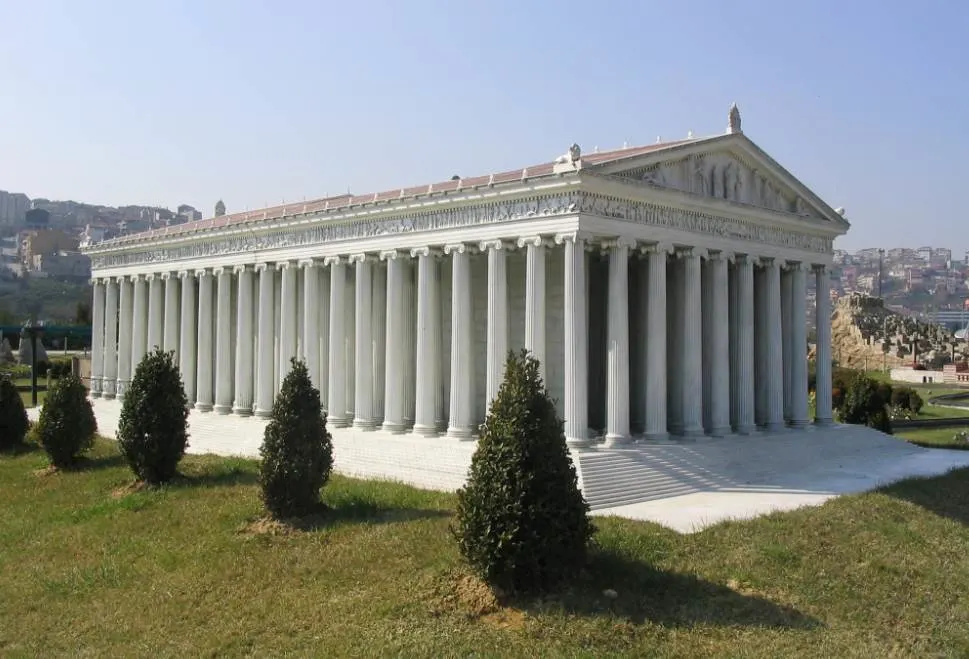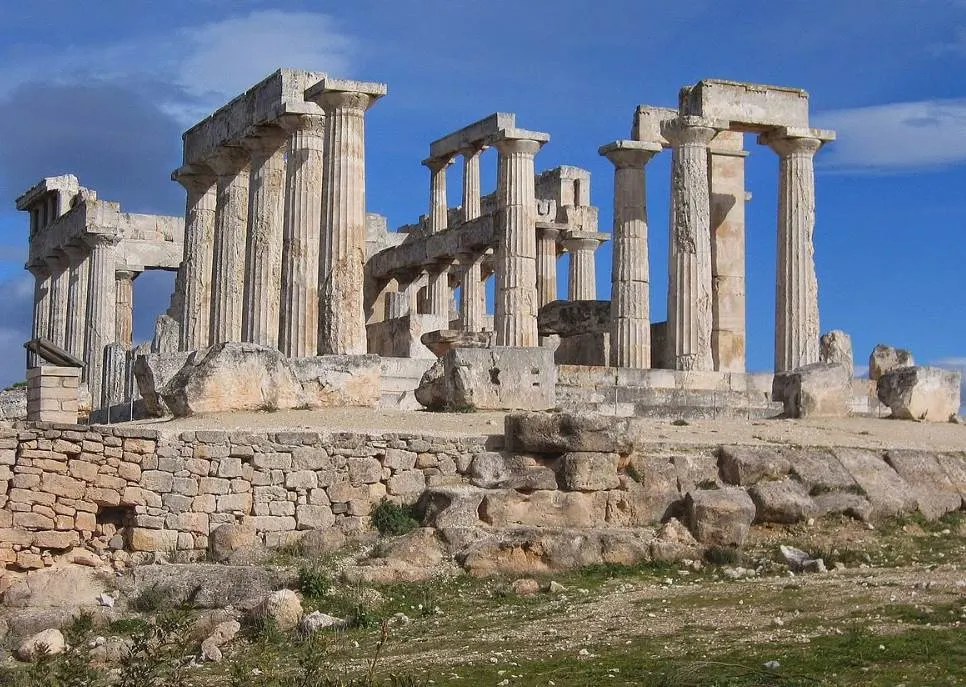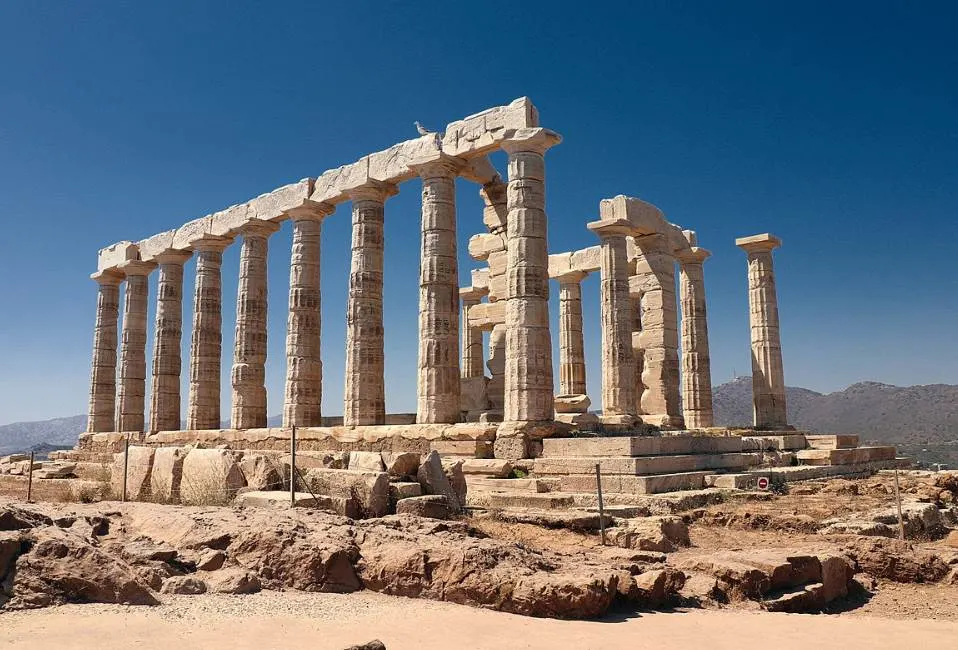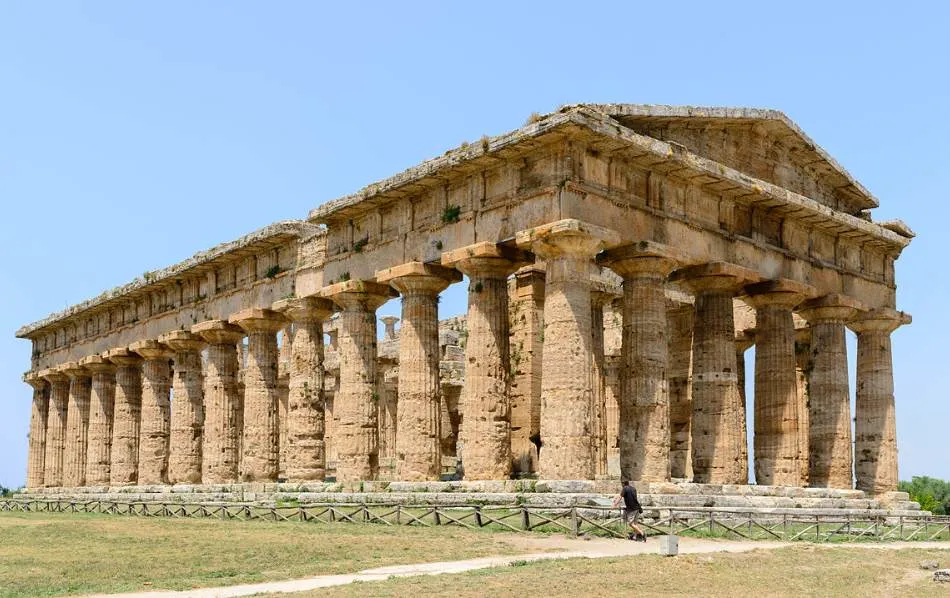The most prominent features of Ancient Greek Architecture were the copious amounts of temples that were constructed all around Ancient Greece.
The impact of Greek culture and architecture on the Western World is immense. It was first absorbed by the Roman Empire and Roman temples were modeled on those found in Greece.
Art and architecture went hand in hand in Ancient Greece and temples were considered to be immense sculptures that were incorporated into the landscape.
Many of these were built on a platform or an elevated location. This emphasized the excellent sense of proportion and grace that characterized them.
Although many Greek temples lay in ruins today, which is unsurprising because they were constructed over 2,000 years ago, we can still get a glimpse of their architectural features.
Ancient Greek architecture became popular once again in the 18th century when Neoclassical buildings were constructed. This revival style continued to be incorporated into buildings until the 20th century.
The list below will allow you to discover some of the most famous Greek temples in history.
1. Parthenon – Athens, Greece
The Parthenon is without question the most famous of all Ancient Greek temples. Its location on top of an elevated rocky outcrop in the heart of the modern-day city of Athens makes it one of the most stunning and best-recognizable landmarks in the world.
The temple was dedicated to the goddess Athena and completed between 447 and 432 B.C. What’s remarkable is that it replaced an even older temple in this location. It has since served as a Catholic church and a mosque and is now a popular tourist attraction in the Greek capital.

2. Temple of Olympian Zeus – Athens, Greece

The Temple of Olympian Zeus is another temple that is situated in the heart of the modern-day city of Athens. The temple is located just 500 meters (0.31 miles) southeast of the Acropolis and only 15 of the original 104 columns that once supported the structure still stand today.
The temple has a remarkable history because although its construction started in the 560s B.C., it wasn’t completed until the reign of Roman Emperor Hadrian in the 2nd century. It was the first temple in ancient Greek to integrate Corinthian columns on the exterior, one of the 5 orders of Ancient Greek architecture.

3. Temple of Artemis – Selçuk, Turkey
The Temple of Artemis is also known as the Temple of Diana and was erected in the ancient city of Ephesus. This is where you can find the town of Selçuk in the Izmir Province of modern-day Turkey. The construction started in the 4th century B.C. and it was considered one of the 7 Wonders of the Ancient World upon completion.
About nothing of the ancient temple remains today but some fragments and its foundations allow us to visualize how the temple looked in ancient times. It was 137 meters (450 feet) long and 69 meters (225 feet) wide. 127 columns supported this immense ancient Greek temple.

4. Temple of Hephaestus – Athens, Greece
The Temple of Hephaestus is a remarkably well-preserved temple of the Doric order that was dedicated to Hephaestus, the ancient Greek god of metalworkers. It was constructed on the northwestern side of the Agora of Athens, the most important public square of the ancient city.
This was the equivalent of a Roman Forum, the central square in ancient Rome, and the Roman Agora was established just east of the Greek. Because the building was preserved so well since its completion in the 5th century B.C., it served as the main Greek Orthodox church of Athens between the 7th and 19th centuries.

5. Temple of Aphaia – Aegina, Greece
The Temple of Aphaia is a temple that was dedicated to the goddess of the same name. She was worshipped exclusively on the island of Aegina in the Saronic Gulf just southwest of Athens. The temple is located in an elevated location in the eastern part of the island.
Completed around 500 B.C., the temple replaced an even older structure that was dedicated in 570 B.C. Although this first temple burned down in 510 B.C., some elements of its foundations have been preserved. The entire complex covered an area of 80 x 80 meters (260 x 260 feet).

6. Temple of Poseidon – Sounion, Greece
The Temple of Poseidon is another famous Greek temple that was constructed on top of a hill. It dominates Cape Sounion and as its name suggests, it was dedicated to the god of the sea, Poseidon. There might have been a structure in this location dating back to the 11th century B.C.
The remains of the temple we can see today are those of a temple that was completed in the 5th century B.C. What’s fascinating is that both the Parthenon and the Temple of Poseidon at Sounion were constructed during the reign of Athenian statesman Pericles (495-429 B.C.).

7. Temple of Zeus – Cyrene, Libya
The Temple of Zeus was one of the temples that were constructed in the ancient Greek city of Cyrene. This city is located in the utmost northeastern part of the modern-day country of Libya in North Africa. It was the oldest of the 5 major cities that the Greeks established in this region.
The original temple in this location was completed during the 5th century B.C. but it has been destroyed and rebuilt multiple times throughout its history. It was rebuilt in the 2nd century A.D. following the Jewish Revolt and partially destroyed once again during an earthquake in the 4th century.

8. Erechtheion – Athens, Greece
The Erechtheion is also known as the Temple of Athena Polias and is situated on the northern end of the Acropolis of Athens. It’s much more than merely a temple because also incorporates a Telesterion or “Great Hall.” It was constructed especially to house the statue of Athena Polias.
It’s one of the most remarkable structures of ancient Greek architecture because its design looks a bit chaotic. This is in sheer contrast to the symmetrical design of just about every other ancient Greek building. The Porch of the Maidens features so-called “korai,” sculptures of young women, instead o traditional columns.

9. Temple of Apollo Epicurius – Oichalia, Greece
The Temple of Apollo Epicurius is a well-preserved temple located within the Bassae archaeological site which includes the ancient Greek city of Phigalia. It’s located near the village of Oichalia in the Messenia region of Greece. This is a very remote area in the southwestern part of the Peloponnese Peninsula.
The temple was constructed between 450 and 400 B.C. and was constructed on the slopes of Kotylion Mountain at an elevation of 1131 meters (3,710 feet) above sea level. Because of its remote location, this unique temple has been preserved very well and it was designated a UNESCO World Heritage site in 1986.

10. Temple of Hera II – Paestum, Italy
The Second Temple of Hera or the Temple of Hera II is another amazing temple located in Paestum in the region of Campania in southern Italy. The temple was completed around 460-450 B.C. and was situated in an area that the Romans later referred to as “Magna Graecia.”
Paestum was a major ancient Greek city in southern Italy and the Second Temple of Hera was one of the three temples that were constructed there. All of them were constructed in the Doric order and the entire archaeological site was designated a UNESCO World Heritage site in 1998.

